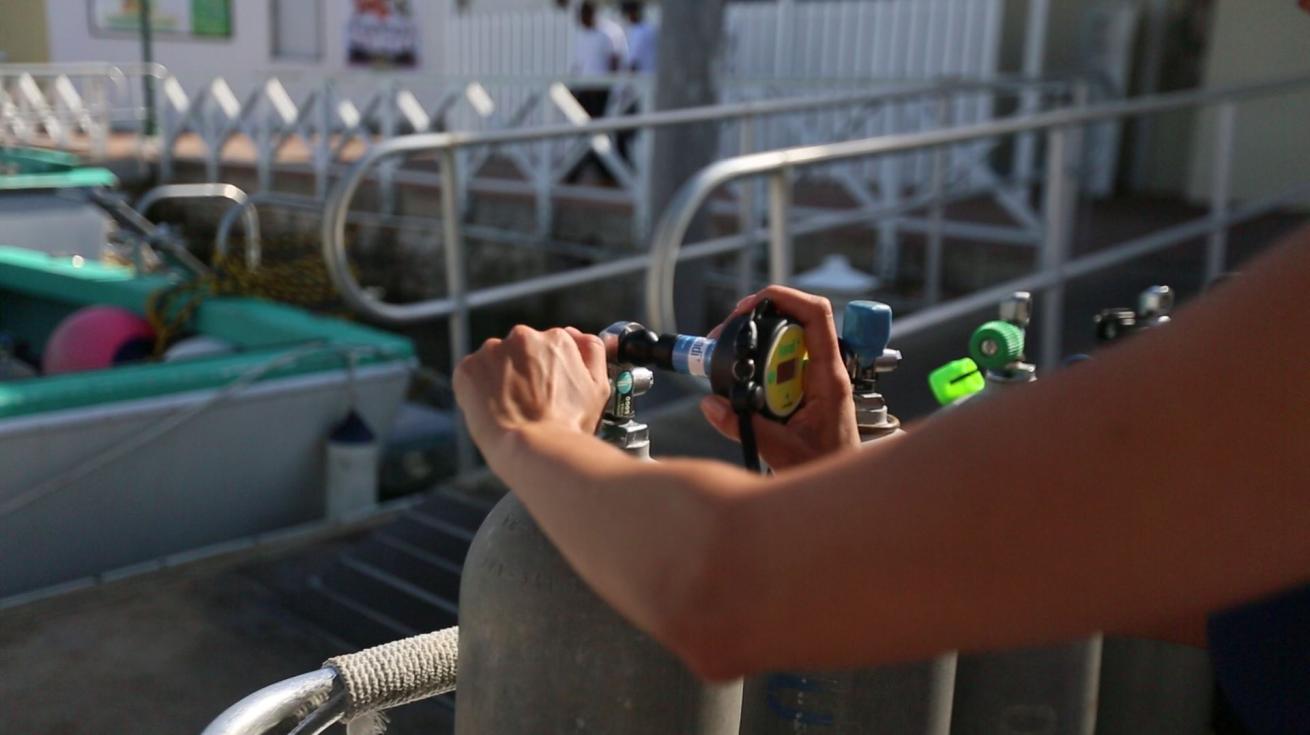Ask DAN: What Is Oxygen Toxicity, and How Can Divers Avoid It?
Oxygen toxicity is one of the most significant dangers nitrox divers face, but fortunately it’s easily preventable. Following training guidelines and planning dives conservatively can significantly reduce your risk—but really understanding how oxygen toxicity affects divers will give you all the incentive you need to adhere to these guidelines.

Courtesy Divers Alert NetworkAny diver breathing a gas with elevated oxygen content should be familiar with oxygen toxicity.
What Is It?
Breathing oxygen at an increased partial pressure for prolonged periods can have harmful effects on the body; oxygen becomes toxic if too many molecules of it are present in our cells. There are two main types of oxygen toxicity that can affect divers: pulmonary toxicity and central nervous system (CNS) toxicity.
Pulmonary oxygen toxicity is of less concern to recreational divers as it occurs with prolonged exposure to elevated oxygen levels. This type of oxygen toxicity can occur in divers doing very long technical dives (in the range of six to 12 hours or more) and divers doing repetitive technical dives over a period of days or weeks.
It most commonly occurs in ICU patients and people undergoing hyperbaric recompression treatment. In the ICU or in a hyperbaric chamber, patients would be breathing 100 percent oxygen for time periods that far exceed typical dive times, so there is only a small likelihood that recreational nitrox divers would experience this type of oxygen toxicity.
If pulmonary oxygen toxicity occurs, it generally begins with inflammation of the upper airway then spreads to the lungs.
Left unchecked, the condition can result in alveolar damage, or collapse and decline in/or loss of lung function. Damage caused by this type of oxygen toxicity is entirely reversible, and because this type of oxygen toxicity occurs almost exclusively in patients in clinical settings, the consequences are not nearly as grave as those associated with experiencing CNS oxygen toxicity in the water.
Central nervous system oxygen toxicity is the real concern for divers, including both recreational nitrox divers and technical divers. The condition can arise without warning, and onset of CNS toxicity can occur with very short exposures to elevated partial pressures of oxygen. The condition begins at the molecular level and affects the complex of tissues that make up the brain and spinal cord, causing tissue damage and seizures.
Understanding how molecular oxygen disrupts the CNS requires an understanding of how the human nervous system works. The nervous system comprises two opposing sides: the sympathetic and parasympathetic nervous systems. Every organ in the body is controlled by one or often both of these sides. Simply put, the sympathetic nervous system activates the body and prepares it for action, while the parasympathetic nervous system calms it down.
Within the central nervous system, nitric oxide (NO) is excreted by various cells and used to suppress the activity of the sympathetic nervous system and widen blood vessels. Under normal conditions a fraction of these NO molecules will bind with molecules of oxygen that are byproducts of cell metabolism. These molecules are called reactive oxygen species (ROS). Remaining unbound NO molecules are meant to stay unbound and available to bind with other molecules to control the sympathetic nervous system.
If we are exposed to elevated partial pressures of oxygen, excess oxygen molecules enter our cells and may bind with all available unbound NO molecules, leaving none to suppress reactions from the sympathetic nervous system. When sympathetic activity becomes extreme, the body releases enormous quantities of adrenaline and noradrenaline in a reaction called an adrenergic storm. This storm can cause seizures, narrowing of the arteries and a spiking of blood pressure and heart rate that may lead to capillary damage, compromised gas exchange and cell or tissue death. Seizures that occur underwater are extremely dangerous, and death by drowning is almost inevitable when they occur.
Who Is At Risk?
Any diver breathing a gas with elevated oxygen content should be familiar with oxygen toxicity. Rebreather and technical divers are at particular risk because of the lengths of their dives and the potential for inadvertent exposure to pure oxygen, but recreational divers face the risk as well.
Fortunately, analyzing your nitrox mix before every dive, properly planning your dive and diving your plan can help you avoid this condition entirely. Because even a slight infringement can get you into trouble, it is imperative that every diver breathing nitrox is able to properly calculate the depth and time limits for their chosen gas mixture, then respects those limits—it’s not just a training recommendation, it’s critical for safety.
For more information on oxygen toxicity, visit dan.org/health or contact DAN directly at dan.org/contact.










